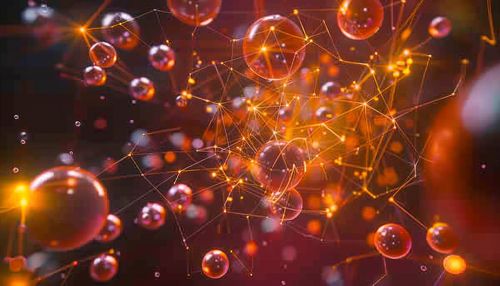Strong force
Introduction
The strong force, also known as the strong nuclear force or the strong interaction, is one of the four fundamental forces of nature, alongside gravity, electromagnetism, and the weak force. As the name suggests, it is the strongest of these forces and is responsible for holding the nucleons (protons and neutrons) together in the atomic nucleus. Despite its strength, the strong force has a very short range, acting only over distances on the order of a femtometer (10^-15 meters).
Fundamental Properties
The strong force is characterized by several key properties, including its strength, range, and the types of particles it affects. It is about 100 times stronger than the electromagnetic force, the next strongest force, and about a million times stronger than the weak force. However, its range is extremely limited, extending only about the size of an atomic nucleus. Beyond this distance, the force drops off rapidly to zero, a property known as confinement.
The strong force acts between particles known as hadrons, which include protons and neutrons. More specifically, it acts between the quarks that make up these particles. Quarks come in six types, or "flavors": up, down, charm, strange, top, and bottom. The strong force is responsible for binding these quarks together to form hadrons.
Quantum Chromodynamics
The theory that describes the strong force is known as quantum chromodynamics (QCD). QCD is a part of the standard model of particle physics, which describes all known elementary particles and their interactions. In QCD, the strong force is mediated by particles known as gluons. Gluons are massless and carry a type of charge known as color charge.
Unlike electric charge, which comes in two types (positive and negative), color charge comes in three types: red, green, and blue. Quarks carry color charge, and the strong force acts to keep the total color charge of a system neutral. This is achieved by the exchange of gluons between quarks.
Color Confinement
One of the key features of the strong force is color confinement. This principle states that quarks cannot exist in isolation; they must always be found in combinations that result in a neutral color charge. This is why we observe protons and neutrons, which are combinations of three quarks, but never individual quarks.
The principle of color confinement is a result of the unique properties of the strong force. Unlike other forces, the strong force does not decrease with distance. Instead, it remains constant. This means that as quarks are pulled apart, the energy in the system increases. Eventually, it becomes energetically favorable to create new quarks rather than continue to separate the existing ones. This is why quarks are always found in combinations.
Strong Force in Nuclear Physics
The strong force plays a crucial role in nuclear physics. It is responsible for binding protons and neutrons together to form atomic nuclei. Without the strong force, the repulsive electromagnetic force between protons would cause nuclei to disintegrate.
The strong force also plays a role in nuclear reactions, such as those that occur in the sun and other stars. In these reactions, the strong force allows protons to overcome their electromagnetic repulsion and collide, leading to the fusion of hydrogen into helium and the release of large amounts of energy.
See Also


